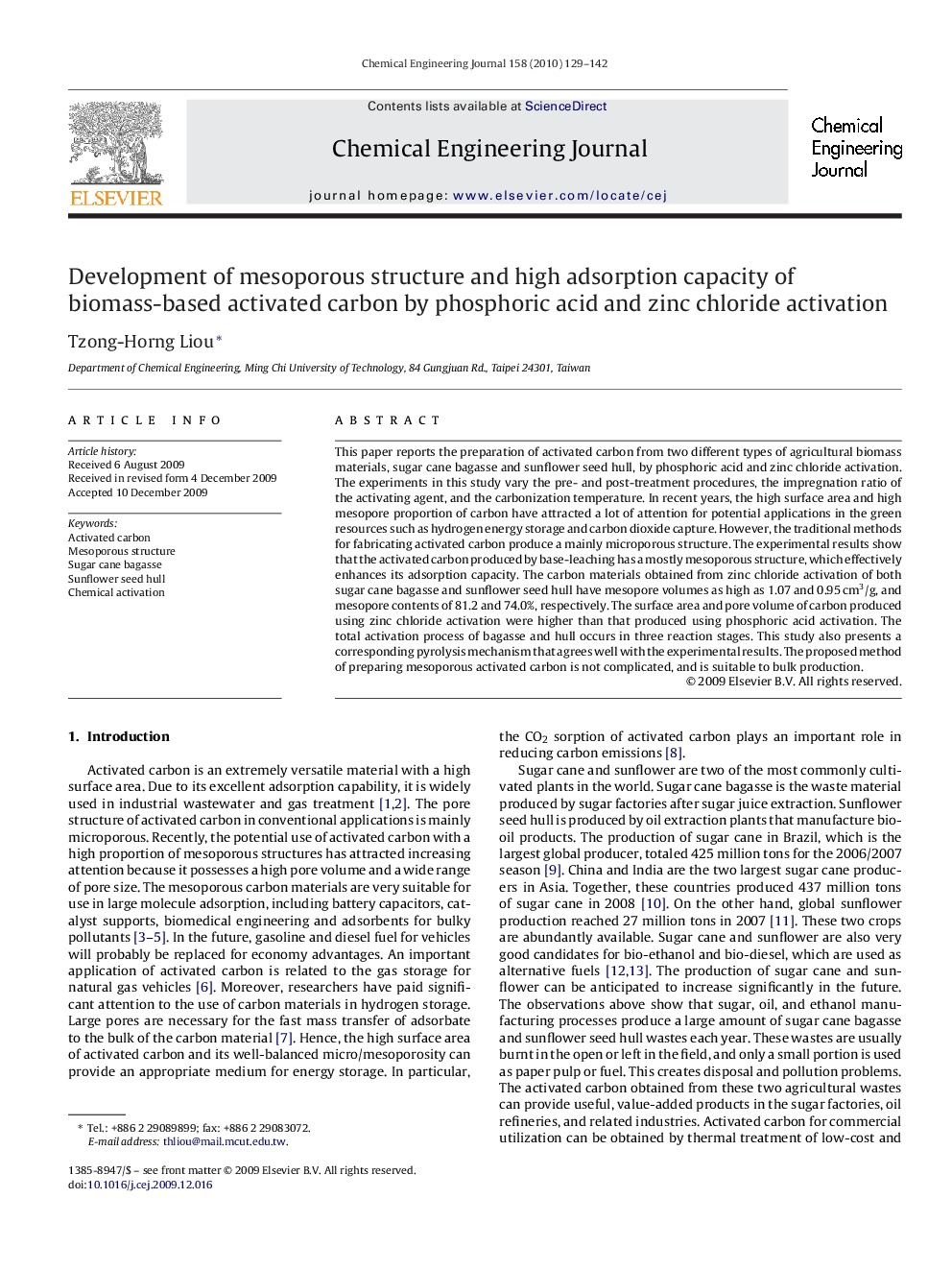| Article ID | Journal | Published Year | Pages | File Type |
|---|---|---|---|---|
| 152082 | Chemical Engineering Journal | 2010 | 14 Pages |
This paper reports the preparation of activated carbon from two different types of agricultural biomass materials, sugar cane bagasse and sunflower seed hull, by phosphoric acid and zinc chloride activation. The experiments in this study vary the pre- and post-treatment procedures, the impregnation ratio of the activating agent, and the carbonization temperature. In recent years, the high surface area and high mesopore proportion of carbon have attracted a lot of attention for potential applications in the green resources such as hydrogen energy storage and carbon dioxide capture. However, the traditional methods for fabricating activated carbon produce a mainly microporous structure. The experimental results show that the activated carbon produced by base-leaching has a mostly mesoporous structure, which effectively enhances its adsorption capacity. The carbon materials obtained from zinc chloride activation of both sugar cane bagasse and sunflower seed hull have mesopore volumes as high as 1.07 and 0.95 cm3/g, and mesopore contents of 81.2 and 74.0%, respectively. The surface area and pore volume of carbon produced using zinc chloride activation were higher than that produced using phosphoric acid activation. The total activation process of bagasse and hull occurs in three reaction stages. This study also presents a corresponding pyrolysis mechanism that agrees well with the experimental results. The proposed method of preparing mesoporous activated carbon is not complicated, and is suitable to bulk production.
